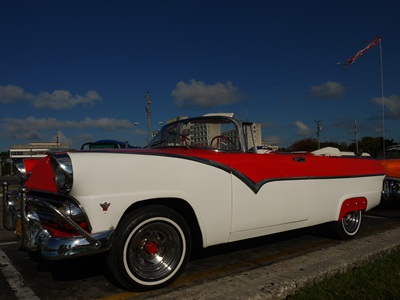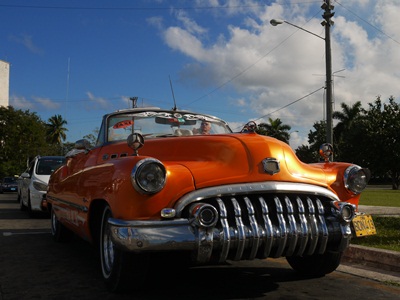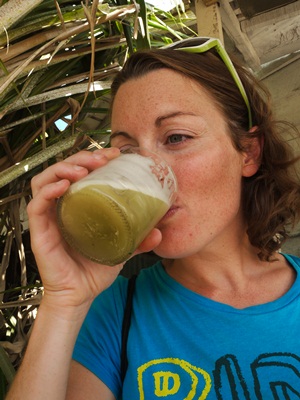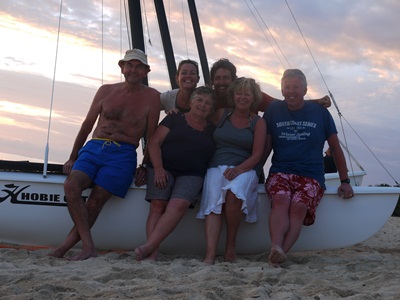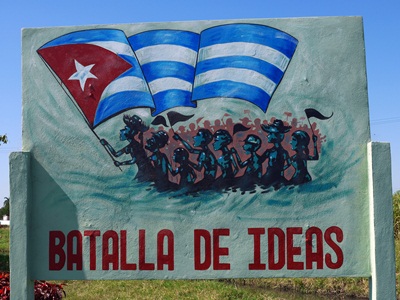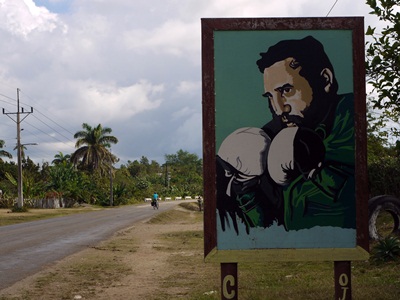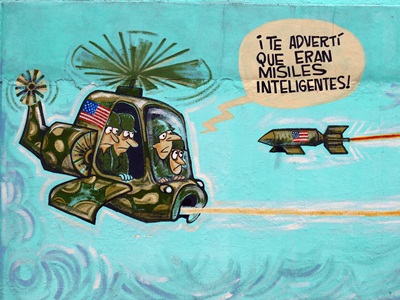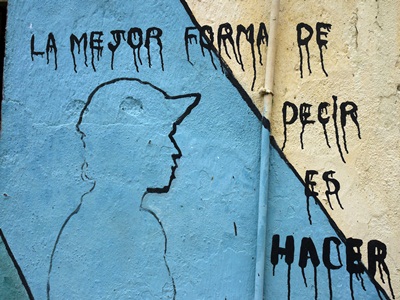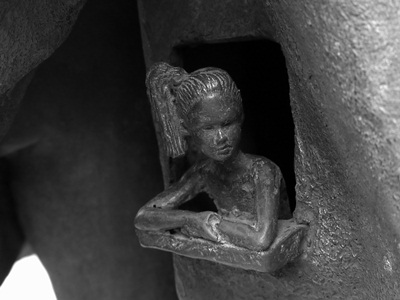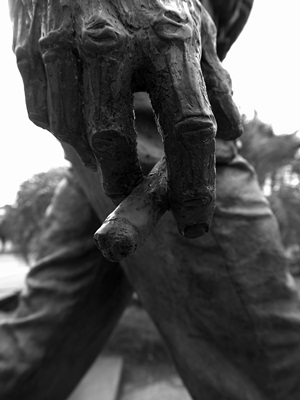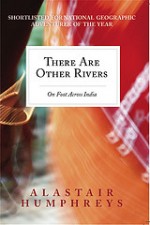Cuba – two weeks of cocktails
February 8th, 2012
Back in Havana, we prepared for our visitors to come and join us. Excitement of a different kind was now mounting and we were both thrilled to see my Mum & Dad and Hester & Richard step out of their taxis into the craziness of Centro Havana. They on the other hand, slightly jet lagged and culture shocked, took a little time to register they had just flown halfway round the world to see two familiar faces…albeit one a lot more bearded than it had been six months ago!
After a good night’s sleep we planned and plotted to see Cuba together, squeezing in Havana’s sights, some colonial treasures, a taste of revolutionary history, a bit of beach time and even a salsa lesson too.
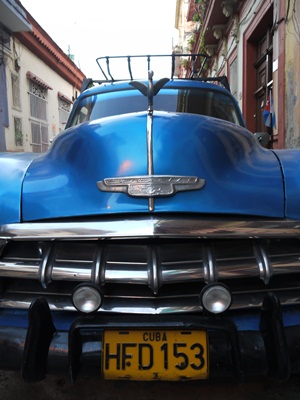
Havana is an assault on the senses in so many ways but what struck us all first was the abundance of classic American cars. These are not museum pieces, they are truly functioning everyday vehicles for Habaneros. Relics of the revolution, some are falling to pieces and cough out plumes of black smoke but many are cared for beautifully and fixed with whatever possible means; trading in and buying new just isn't an option here.
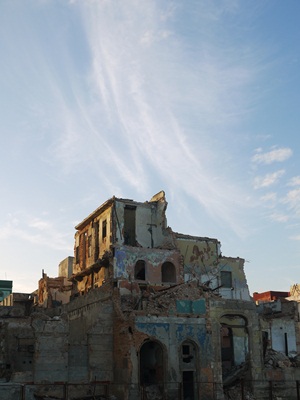
Havana Vieja, the city's most central and visited district has been lovingly and beautifully restored by the city's historian. Other parts of Havana however have been left to crumble and decay and far from being deserted, it's likely that even though it's in this state, there may well still be people living in this building.
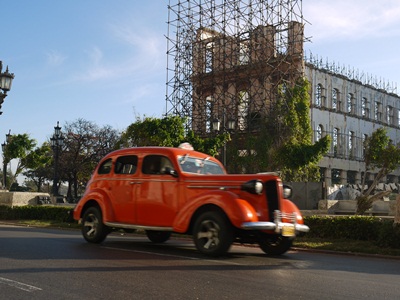
Where restoration has begun, it has sometimes stalled too. The greenery growing amongst this scaffolding suggests that work to restore this building was halted some time ago, perhaps around the time the car in front of it was a new model?
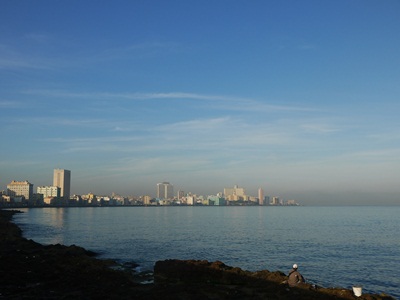
The view from the Malecón shows that major development in Cuba just hasn't happened – in any other capital city, you'd expect the seafront boardwalk to be awash with bars, cafes and skyscrapers. The biggest buildings here are the few hotels outside of the city centre.
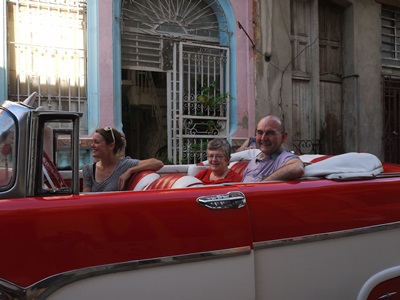
It was Dad's birthday while we staying in Havana and the birthday fairy arranged for two classic cars to collect us all for a sightseeing trip around town. The '55 Ford and the '59 Buick were an instant hit.

Then on a trip to the Hotel Nacional for birthday drinks, we found ourselves in yet another classic car. This one managed to squeeze all six of us in.
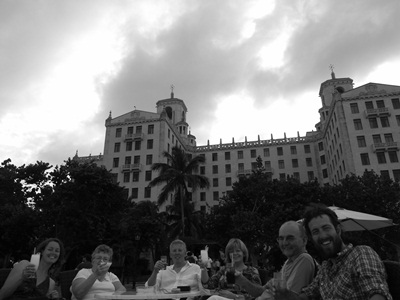
Piña Colada, Cuba Libre, Mojito, Daquiri…the delicious classic cocktails of Cuba enjoyed in a classic setting. Outside, on the terrace of the Hotel Nacional, overlooking the Malecón and watching the sun set over the Atlantic, we felt like we'd celebrated Dad's birthday in style.
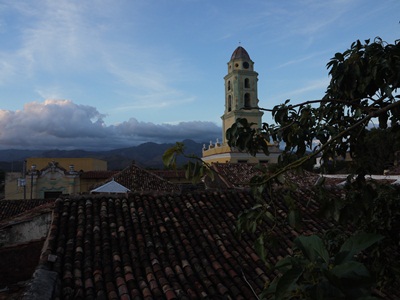
Birthday celebrations over, we headed for pretty Trinidad in the centre of the island. Once a Spanish colonial stronghold little has changed here over the past couple of centuries…
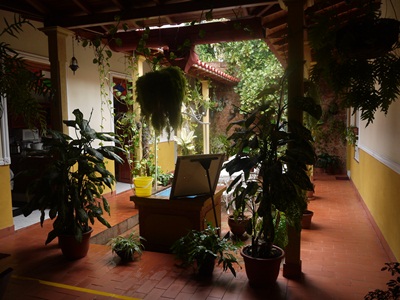
…we stayed in beautiful colonial casa particulares, like this one with Buri and Ernestina, who by a stroke of luck, happened to make delicious cocktails for us to enjoy on their patio!
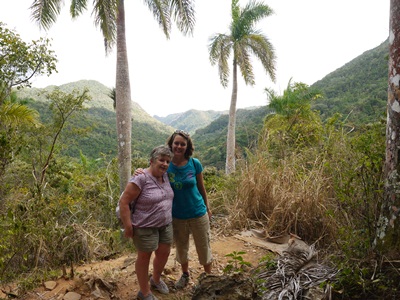
From Trinidad, we headed out to the jungle for a day's hike to a waterfall in the Sierra del Escambray. Half the hike was a hot rocky descent, the other half a hot rocky climb…
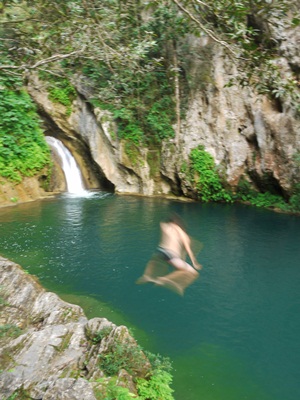
…but we were rewarded with cool green pools of mountain water which James of course couldn’t resist jumping into!
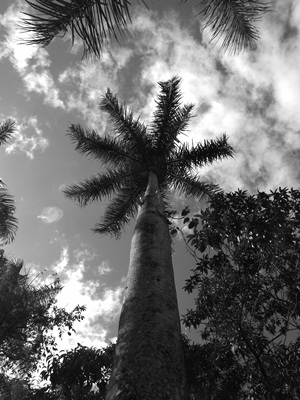
We saw hundreds of majestic palms and many tropical birds including the national bird of Cuba, the beautiful tocororo.
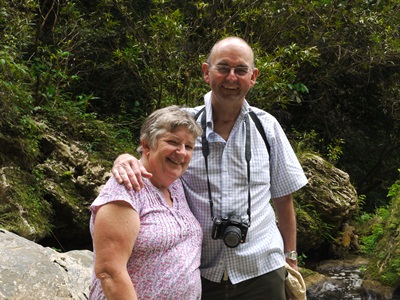
They're all smiles now they've reached the bottom, but wait until they realise it's a two hour climb back to the top!
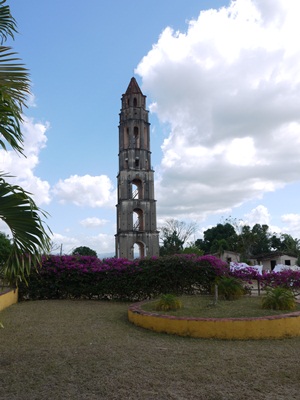
Leaving Trinidad for a few days, on a side trip to Santa Clara, we stopped at the site of a former sugar plantation. This tower was used to check on workers in the fields and the bell sounded when a day sweltering in the heat chopping down cane was finally over.
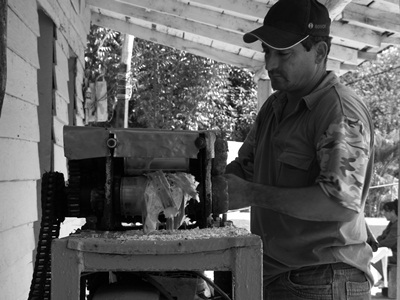
Under the shadow of the watchtower, a man makes cold sugarcane refrescos using what looks like a mangle.
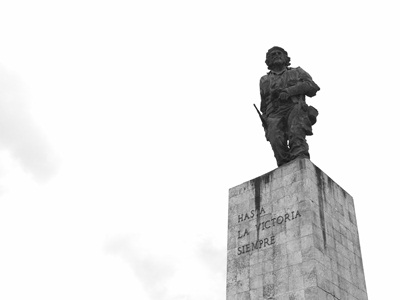
As the site of one of the crucial battles of the revolution, Santa Clara has a special place in Cuban history. Ché led the guerrillas to a victory here that sealed Fidel's bid to become Cuba's new leader. When Ché's body was found in Bolivia in the 1990s (where he had been executed following guerrilla battles on behalf of Bolivian revolutionaries), it was removed and brought back to Santa Clara. A monument, mausoleum and museum have been erected in Ché's honour and the whole city echoes with his legacy.
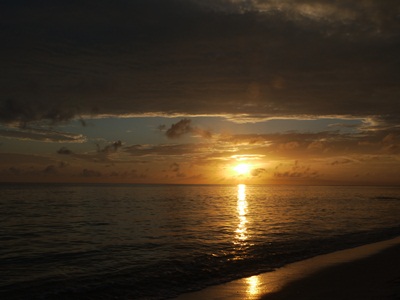
Our last day back in Trinidad provides an idyllic day on the beach. Out at Playa Ancon, we snorkel, buy coconuts with straws in and lounge around in the sand. We're rewarded with a beautiful sunset….
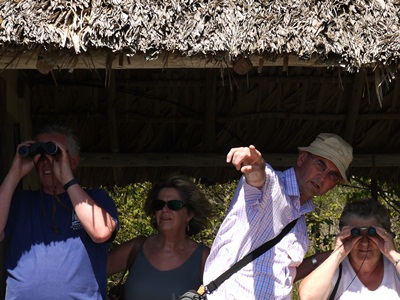
A pit stop on the way back to Havana from Trinidad at Laguna Guanaroca for the bird enthusiasts in the group. We spot flamingoes, hummingbirds, terns and giant egrets and a few “black and white thingies” that we can't identify. The keen ones with binoculars have got it sussed, the rest of us just squint and point.
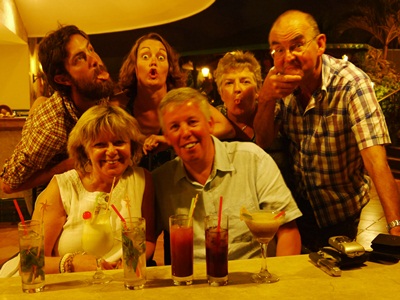
One more chance in Havana for cocktails and silly faces. A great fortnight had by all, it's hard to say goodbye to each other and to Cuba….
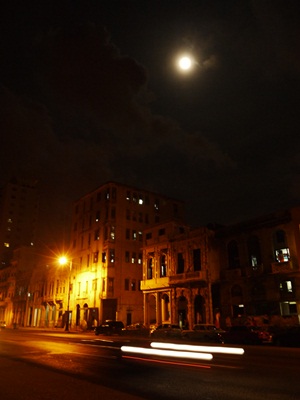
….but as night falls in Havana we feel there will be a “next time” here…the music, the people, the history, the setting, the cocktails have had us all hypnotised and it won't be hard to find more than one reason to return.
Sarah
Cuba: Propaganda in pictures
February 15th, 2012
Welcome to Cuba’s special brand of socialism. Equality, harmony, self-sacrifice….and a wonderful lack of advertising. After months of a daily bombardment of roadside advertising boards, flashing neon signs and people generally just trying to sell us stuff, Cuba certainly came as a breath of capitalism-free fresh air.
Instead, Cubans go about their daily business against the backdrop of socialist “thoughts for the day” from Fidel or Raul, the stern revolutionary gaze of Che Guevara and reminders to beware the imperialist Yankee aggressor to the North.
It was fascinating to see how using public space in this way remains such an important part of Cuba’s propaganda machine; a means of constantly re-asserting the spirit of independence and defiance which has somehow carried it through over 50 years in a state of “permanent Revolution”.
Even more interesting would be to know what Cubans really think about this endless backdrop of austere propaganda. In a country where there is little option but to tow the party line, it’s hard to crack the surface and know – especially for us, operating as we do in the strange parallel world of Cuban tourism, carefully screened from the realities of Cuban life.
Maybe Cubans do roll their eyes as they pass under Fidel’s wagging finger on the way to work each day? Or maybe this resurrection of past glories does still inspire them to sacrifice themselves even harder for the revolutionary cause?
Or maybe – like so many other elements of “Cuban-ness” which are so surprising and baffling to our capitalist eyes – they don’t even notice it anymore.
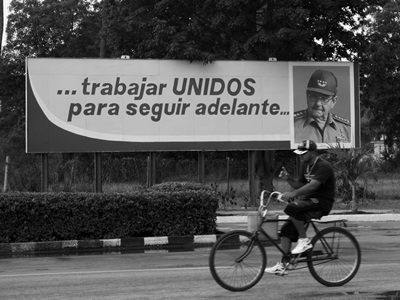
…although his brother Raul, who took on the role of President after Fidel became ill in 2006 was also much in evidence. Raul’s call for unity here: “By working together we move forwards”.

Every available space is used to promote the revolution and its ideals – here a roadside oil tank proclaims “In every neighbourhood, Revolution!”
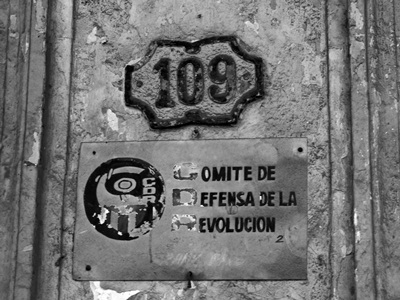
Central to the grass-roots spread of the Revolution within each neighbourhood were the CDRs, or “Committees for the Defense of the Revolution”. In time they became took on a more sinister reputation as community spies (think Neighbourhood Watch but even more sinister) – but were still evident in every town and village we travelled through.

Some propaganda was more spontaneous – like this “Long live Fidel and Raul” scrawled by hand onto a concrete post in the middle of nowhere, along the old coast road back to Santiago.

“Without culture there is no life” – one of a series of slogans sprayed onto rocks on the road up to La Plata, the wartime guerilla camp in the Sierra Maestra.
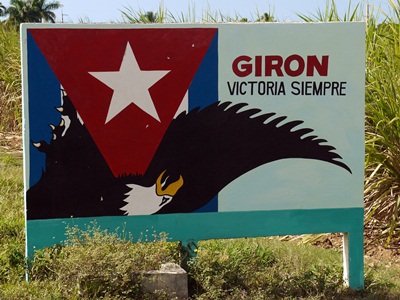
Unsurprisingly, the USA – Fidel’s eternal nemesis – remains the target of much Cuban propoganda. This billboard celebrates the Cuban victory at Playa Girón, where Cuban forces defeated a disastrous CIA-sponsored attempt to overthrow Castro’s new government in 1961.
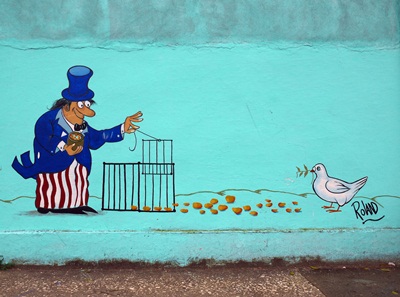
In Santa Clara, a series of murals declare “Guerra a la Guerra” (“War on War”) and take a more humorous approach – here Uncle Sam lures the dove of peace…
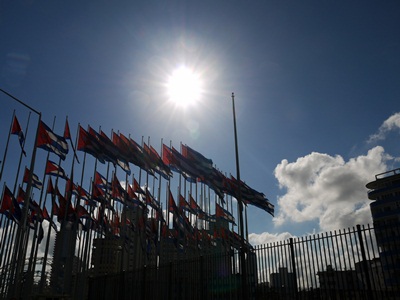
The US “Special Interests” building in Havana has been the site of some of the most comical propaganda battles between the two countries. In 2006, the US erected a scrolling electronic billboard in their top floor windows, delivering anti-Castro messages such as: “How sad that all the people that would know how to run this country are driving taxis or cutting hair”. In response, Fidel erected this “wall” of 138, 20 metre high flags to block out the billboard, along with their own board for a fake US blockbuster called “The Assasin”, starring George W. Bush as an axe murderer. Global politics meets primary school playground…
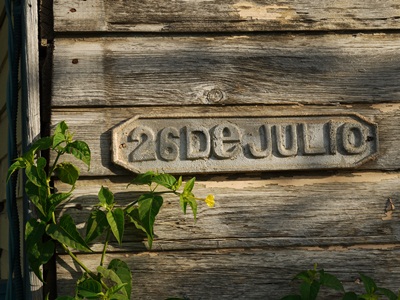
Almost every town in Cuba bears the date 26th July in some form or another – the date in 1953 when Fidel launched his first attack against the Batista regime in Santiago de Cuba, and the name of his fledgling revolutionary movement.
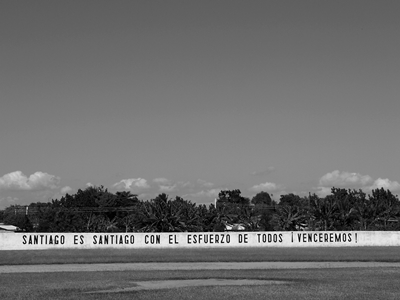
As the birthplace of the Revolution, Santiago province remains vocally loyal to its ideals – here the perimeter wall of a city baseball field proclaims: “Santiago is Santiago, with everyone’s effort we will be victorious!”
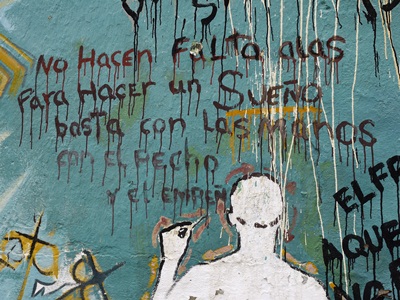
“You do not need wings to make a dream, just hands, just heart, just legs, and commitment.” Detail from a wall mural in Santa Clara featuring a verse from the Cuban “trova” singer Silvio Rodriguez.
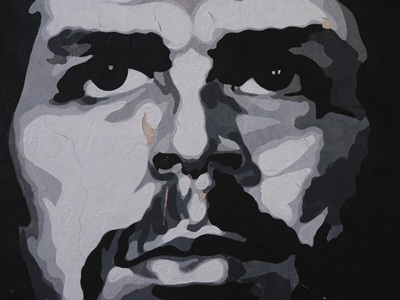
…a sentiment that this man, Che Guevara, would no doubt endorse. Che’s face, as embodiment of the “Cuban revolutionary spirit” is everywhere in Cuba.
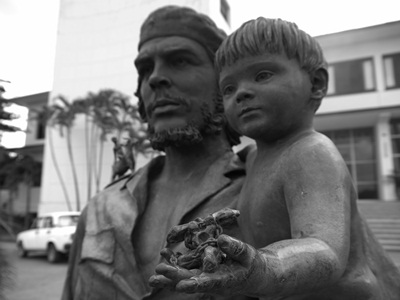
By far the most interesting homage to Che was this understated statue of “Che y el nino” (“Che and child”) outside a government office in Santa Clara.
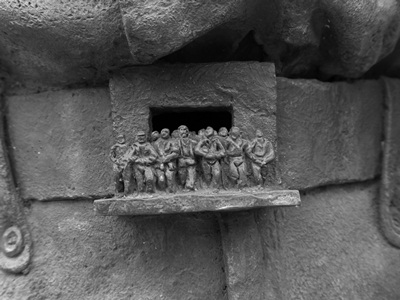
A closer look revealed that the statue included lots of tiny details of Che’s life: in his belt, his comrades from his last, fatal revolutionary expedition to Bolivia in 1967…
Om du inte gillar långa festklänningar som hindrar din rörelse under dansen, korta balklänningar är perfekta valet. Upprätthålla en hög kvalitet och unik design har vår korta festklänningar fått mer och mer uppskattning bland våra kunder. Känn dig fri att göra din klänning kontroll som perfekt visar mjukhet din dans.
James
Book Review: There Are Other Rivers
February 26th, 2012
“You should write a book about this”, someone says for the umpteenth time on the trip so far. I smile politely. But we really shouldn’t write a book about this. Go to the adventure travel section of any bookshop and you will find it stuffed with people’s accounts of their fastest/most unsupported/youngest attempt to cycle/run/skateboard around the Americas/North Pole/the World.
There really are enough cliche-ridden “man/woman conquers the world” adventure accounts out there already. There is no room – or more importantly any need (beyond pure self-indulgence) – for us to add our own very sedate cycling holiday to the shelves.
Far more interesting (to me at least) is trying to understand what lies behind the lure of tough physical adventure travel in the first place. Al Humphreys’ latest book, There Are Other Rivers, explores exactly this; in his words it is “an attempt to articulate my fascination with the open road and the magnetism of the next horizon”.
In the interests of objectivity, I guess I should come clean and state that we are big fans of Al Humphreys. In fact, it wouldn’t be overly melodramatic to say that without him, there’s a very good chance we would still be sat behind a desk daydreaming about this adventure, rather than writing this from somewhere in Mexico after seven months on the road.
First we read (and then re-read) his books about his four years spent cycling around the world. Then, in a stroke of present-giving genius, Sarah booked Al to come and speak for family and friends on my 30th birthday. After that, it wasn’t really a question of “if” we would set off on our own adventure, only “when”.
Superficially, There Are Other Rivers is a short story based on Al’s recent walk across India, following the length of one of its seven holy rivers from sea to source. But it’s not really a book about walking, or even about India. Unlike most “adventure books”, there are no names of places or people, no route maps, no kit lists and a refreshing lack of melodrama. It doesn’t even have a foreword by Bear Grylls.
Instead, Al has compressed his India experience into a single day on the road, during which he explores different aspects of the travelling experience. It’s a bold break with adventure writing convention, and one which he pulls off with great success.
Given our current life on the road, you won’t be surprised to hear that my reading of this book was accompanied by much furious head-nodding. As always, Al articulates my own wanderlust more concisely and eloquently than I ever could myself.
But what if you have no interest in adventure travel, no desire to cycle across continents or row across oceans? Why would you read this book? Well, because I guarantee that it will – in the nicest possible way – give you a kick up the arse. Because for Al, “adventure” is not necessarily about crossing continents, instead it is “a state of mind…an attitude of curiosity, bold enthusiasm, ambition, effort and a rejection of mediocrity.”
Passionate, honest and irresistible, There Are Other Rivers is ultimately a rallying call to switch off the TV, set yourself an ambitious goal – whatever that may be – and make the most of every precious second of life. And I can’t think of anyone who doesn’t need that every once in a while.
——
There Are Other Rivers is self-published and is available from Al’s website in lots of different formats for bargain prices – just £5 for the printed edition or less than £2 for the Kindle version.
James
